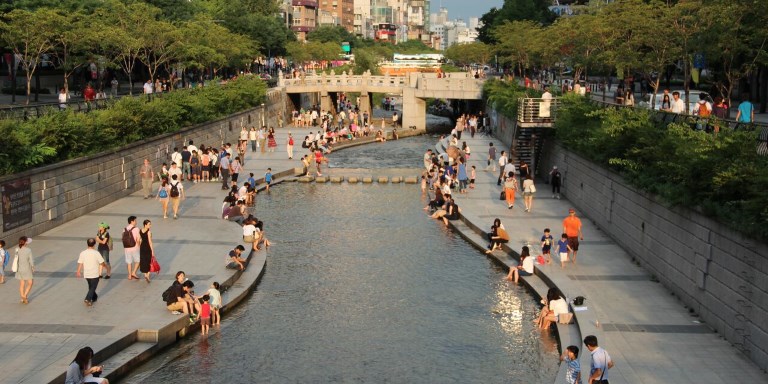rashemamelson.org – In the heart of Seoul, South Korea, lies a remarkable testament to urban renewal and environmental revitalization: the Cheonggyecheon Stream. Once a forgotten waterway, buried beneath a concrete highway for decades, Cheonggyecheon has been transformed into a vibrant, bustling public space that has rejuvenated the city’s core. This article explores the fascinating journey of Cheonggyecheon from obscurity to becoming a symbol of Seoul’s vibrant heart.
A Hidden Stream Beneath the City
The story of Cheonggyecheon begins centuries ago, when it was an integral part of Seoul’s landscape, providing water for the city’s residents and contributing to the city’s agricultural prosperity. However, rapid industrialization and urban development in the 20th century led to the stream being covered over and forgotten, replaced by a raised highway that became a symbol of the city’s modernization at the expense of its natural heritage.
The Vision for Revitalization
The turning point came in the early 2000s when the city of Seoul embarked on an ambitious project to restore Cheonggyecheon to its former glory. The vision was not just to uncover a stream but to revitalize the city’s heart, creating a green, sustainable space that would reconnect Seoul’s residents with nature and their historical roots.
The Restoration Project
The Cheonggyecheon Restoration Project was a massive undertaking that involved not only the demolition of the elevated highway but also the meticulous uncovering and restoration of the stream. Engineers, historians, and environmental experts worked together to ensure that the project respected the stream’s natural flow and historical significance. The project also included the planting of thousands of trees and plants along the stream’s banks, creating a lush, green corridor through the city.
The Impact on Seoul
Since its completion, Cheonggyecheon has had a profound impact on Seoul. The stream has become a beloved public space, attracting residents and tourists alike with its tranquil waters, lush greenery, and cultural events. It has also played a significant role in improving the city’s environmental quality, contributing to the reduction of urban heat islands and enhancing biodiversity.
Cultural and Social Hub
Beyond its environmental benefits, Cheonggyecheon has become a cultural and social hub. The stream hosts various events throughout the year, including traditional Korean festivals, art installations, and outdoor concerts, fostering a sense of community and cultural pride among Seoul’s residents.
Conclusion
The Cheonggyecheon Stream is more than just a restored waterway; it is a symbol of Seoul’s commitment to sustainability, historical preservation, and community well-being. By revitalizing Cheonggyecheon, Seoul has not only reclaimed its natural heritage but has also rejuvenated its heart, creating a vibrant, inclusive space that enriches the lives of its residents and visitors. The success of the Cheonggyecheon Restoration Project serves as an inspiration for urban renewal projects worldwide, demonstrating that it is possible to harmonize nature, history, and modernity in the heart of a bustling city.
